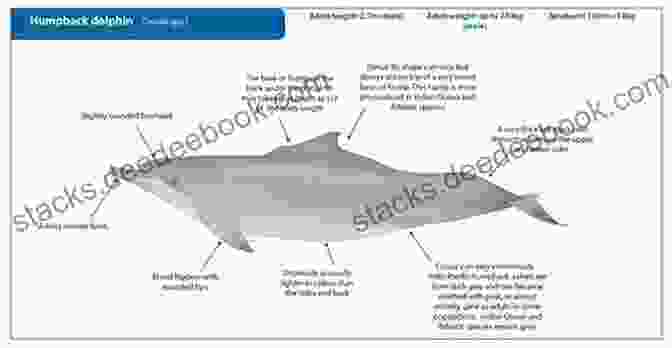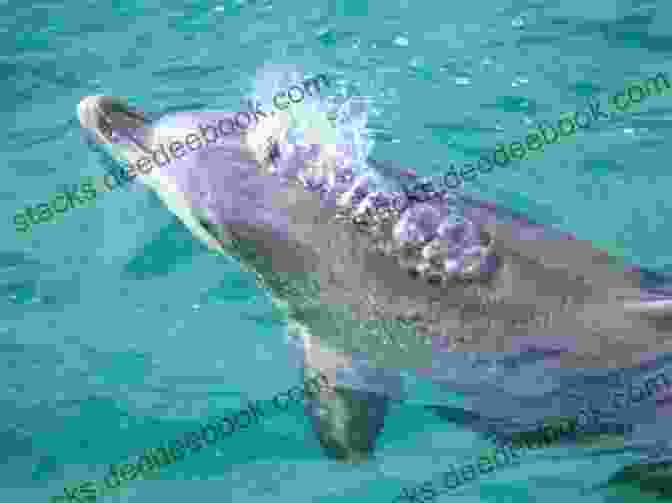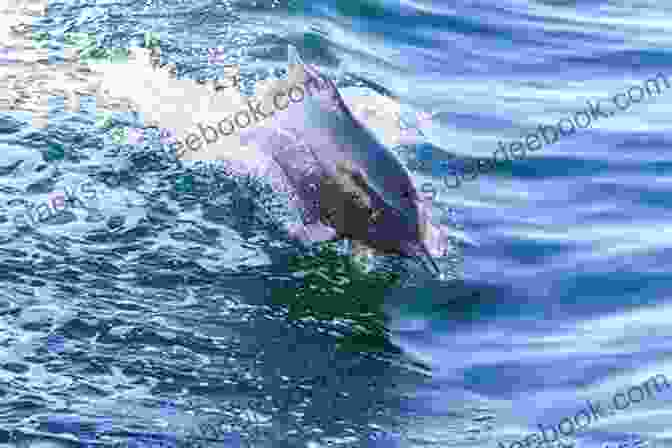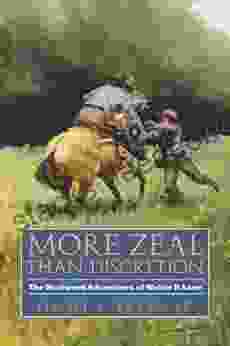Unveiling the Enigmatic World of Humpback Dolphins: Sousa Spp.

Beneath the shimmering ocean surface, a captivating dance unfolds—a dance performed by the enigmatic humpback dolphins, known scientifically as Sousa spp. These alluring creatures represent a unique genus of marine mammals, captivating marine enthusiasts with their distinctive physical attributes, intricate behaviors, and remarkable adaptations.
4.6 out of 5
| Language | : | English |
| File size | : | 46729 KB |
| Text-to-Speech | : | Enabled |
| Screen Reader | : | Supported |
| Enhanced typesetting | : | Enabled |
| Word Wise | : | Enabled |
| Print length | : | 331 pages |
Humpback dolphins, like the Indian humpback dolphin (Sousa plumbea) and the Atlantic humpback dolphin (Sousa teuszii),inhabit the tranquil waters of tropical and subtropical oceans around the world. As we delve into the world of these extraordinary dolphins, we shall explore their intriguing physical characteristics, uncover their fascinating behaviors, and shed light on the remarkable adaptations that have shaped their marine existence.
Unveiling the Humpback Dolphin's Distinctive Attributes

Humpback dolphins are renowned for their distinctive physical characteristics that set them apart from other dolphin species:
- Rounded Dorsal Fin: One of the most striking features of humpback dolphins is their rounded dorsal fin, which differs significantly from the triangular fins found in many other dolphin species. This rounded fin adds to their unique and easily recognizable silhouette.
- Prominent Hump: Humpback dolphins derive their name from the prominent hump situated just behind their dorsal fin. This hump is a defining characteristic of the species and is particularly noticeable in adult individuals.
- Short and Stocky Body: Compared to other dolphin species, humpback dolphins possess a relatively short and stocky body. This compact build contributes to their maneuverability and agility in their marine environment.
- Small and Rounded Flippers: Humpback dolphins have small and rounded flippers, which differ from the elongated and pointed flippers of many other dolphin species. These flippers are well-suited for their coastal habitats.
Unraveling the Intriguing Behaviors of Humpback Dolphins

Humpback dolphins exhibit a fascinating array of behaviors that contribute to their survival and social interactions:
- Spyhopping: Spyhopping is a peculiar behavior where humpback dolphins raise their heads above the water's surface, often for extended periods. This behavior is thought to serve various purposes, including observation, communication, and thermoregulation.
- Tail-Slapping: Humpback dolphins are known for their distinctive tail-slapping behavior, which involves repeatedly slapping their powerful tails against the water's surface. This behavior is often associated with communication, aggression, and play.
- Breaching: While not as common as in some other dolphin species, humpback dolphins occasionally breach the water's surface, leaping high into the air. This behavior is often associated with excitement, play, or communication.
- Foraging Strategies: Humpback dolphins employ a variety of foraging strategies to locate prey. They often use echolocation to detect fish and other marine organisms, and they may engage in cooperative hunting techniques.
Exploring the Remarkable Adaptations of Humpback Dolphins

Humpback dolphins possess remarkable adaptations that allow them to thrive in their marine environment:
- Echolocation: Like other dolphins, humpback dolphins utilize echolocation, a sophisticated biological sonar system, to navigate their surroundings and locate prey. They emit high-frequency sound waves and interpret the returning echoes to create a detailed mental image of their environment.
- Thermoregulation: Humpback dolphins have adapted to the varying temperatures of their coastal habitats. They possess a thick layer of blubber beneath their skin, which provides insulation and helps them maintain their body temperature.
- Social Behavior: Humpback dolphins are social creatures and live in pod structures that range in size from a few individuals to several hundred. They form strong social bonds and cooperate in various activities, including feeding, defense, and raising young.
- Coastal Habitats: Humpback dolphins are predominantly found in coastal areas, including estuaries, bays, and shallow waters near shore. They are well-adapted to these habitats and rely on the丰富的食物来源and protection they offer.
Conservation Status and the Future of Humpback Dolphins

Humpback dolphins face various threats to their survival, including:
- Habitat Loss and Degradation: Coastal development, pollution, and other human activities can lead to habitat loss and degradation, impacting the survival of humpback dolphin populations.
- Bycatch: Humpback dolphins can become entangled in fishing gear, resulting in injury or death. Bycatch is a significant threat to many dolphin species, including humpback dolphins.
- Climate Change: Climate change is impacting the marine environment in various ways, including altering the distribution of prey species and disrupting coastal habitats. Climate change poses significant challenges to humpback dolphins.
Conservation efforts are underway to protect humpback dolphins and their habitats. These efforts include:
- Marine Protected Areas: Establishing marine protected areas can help to safeguard critical habitats for humpback dolphins and other marine species.
- Bycatch Mitigation Techniques: Implementing bycatch mitigation techniques, such as using dolphin-friendly fishing gear, is crucial to reducing accidental deaths of humpback dolphins.
- Public Education and Awareness: Raising awareness about the importance of humpback dolphins and their conservation is vital for protecting these incredible creatures.
Humpback dolphins, with their captivating physical attributes, intriguing behaviors, and remarkable adaptations, are a testament to the wonders of the marine realm. As we continue to explore and understand these enigmatic creatures, we deepen our appreciation for the diversity and beauty of the ocean's inhabitants. Through conservation efforts and responsible actions, we can help ensure the survival of humpback dolphins and preserve the delicate balance of marine ecosystems for generations to come.
4.6 out of 5
| Language | : | English |
| File size | : | 46729 KB |
| Text-to-Speech | : | Enabled |
| Screen Reader | : | Supported |
| Enhanced typesetting | : | Enabled |
| Word Wise | : | Enabled |
| Print length | : | 331 pages |
Do you want to contribute by writing guest posts on this blog?
Please contact us and send us a resume of previous articles that you have written.
 Novel
Novel Page
Page Chapter
Chapter Text
Text Story
Story Reader
Reader E-book
E-book Magazine
Magazine Newspaper
Newspaper Sentence
Sentence Glossary
Glossary Preface
Preface Annotation
Annotation Manuscript
Manuscript Codex
Codex Tome
Tome Classics
Classics Library card
Library card Narrative
Narrative Autobiography
Autobiography Thesaurus
Thesaurus Narrator
Narrator Resolution
Resolution Librarian
Librarian Catalog
Catalog Archives
Archives Research
Research Reserve
Reserve Academic
Academic Journals
Journals Reading Room
Reading Room Rare Books
Rare Books Study Group
Study Group Thesis
Thesis Dissertation
Dissertation Storytelling
Storytelling Awards
Awards Reading List
Reading List Book Club
Book Club Theory
Theory Ashley Farley
Ashley Farley Paul Polak
Paul Polak Chihiro Takeuchi
Chihiro Takeuchi Soseh Yekanians
Soseh Yekanians Adrian Salceanu
Adrian Salceanu Nicole C Engard
Nicole C Engard Robin Fedden
Robin Fedden Stephen Coonts
Stephen Coonts Jonathan Wilson Hartgrove
Jonathan Wilson Hartgrove Anna Hrachovec
Anna Hrachovec Roy Williams
Roy Williams Clara Meath
Clara Meath Andrew Mango
Andrew Mango Janet Evanovich
Janet Evanovich Joseph Crosby Lincoln
Joseph Crosby Lincoln Maxime J Durand
Maxime J Durand Myra Wood
Myra Wood Connie Kerbs
Connie Kerbs Gayle Trotter
Gayle Trotter Brian Kane
Brian Kane
Light bulbAdvertise smarter! Our strategic ad space ensures maximum exposure. Reserve your spot today!

 Jaylen MitchellRobert McGarrigle aka Sinned: A Journey of Redemption and Rock 'n' Roll...
Jaylen MitchellRobert McGarrigle aka Sinned: A Journey of Redemption and Rock 'n' Roll... Griffin MitchellFollow ·7.9k
Griffin MitchellFollow ·7.9k Eliot FosterFollow ·6.2k
Eliot FosterFollow ·6.2k Roald DahlFollow ·3.1k
Roald DahlFollow ·3.1k Chase SimmonsFollow ·13.2k
Chase SimmonsFollow ·13.2k Noah BlairFollow ·8.5k
Noah BlairFollow ·8.5k Italo CalvinoFollow ·14.5k
Italo CalvinoFollow ·14.5k Ethan MitchellFollow ·12.7k
Ethan MitchellFollow ·12.7k Andy HayesFollow ·19.8k
Andy HayesFollow ·19.8k

 Amir Simmons
Amir SimmonsMore Zeal Than Discretion: A Closer Look at the Risks and...
Enthusiasm is often seen as a positive...

 Wayne Carter
Wayne CarterYear of the Dog: American Poets Continuum 178
Year of the Dog is a...

 David Foster Wallace
David Foster WallaceThe Constitution of the State of New York: A...
The Constitution of the...

 Harvey Bell
Harvey BellSmall Cetaceans of Japan: Exploitation and Biology
Small cetaceans, including...

 Blake Bell
Blake BellEffortless Elegance: A Comprehensive Guide to Captivating...
In the realm of crocheting,...
4.6 out of 5
| Language | : | English |
| File size | : | 46729 KB |
| Text-to-Speech | : | Enabled |
| Screen Reader | : | Supported |
| Enhanced typesetting | : | Enabled |
| Word Wise | : | Enabled |
| Print length | : | 331 pages |












